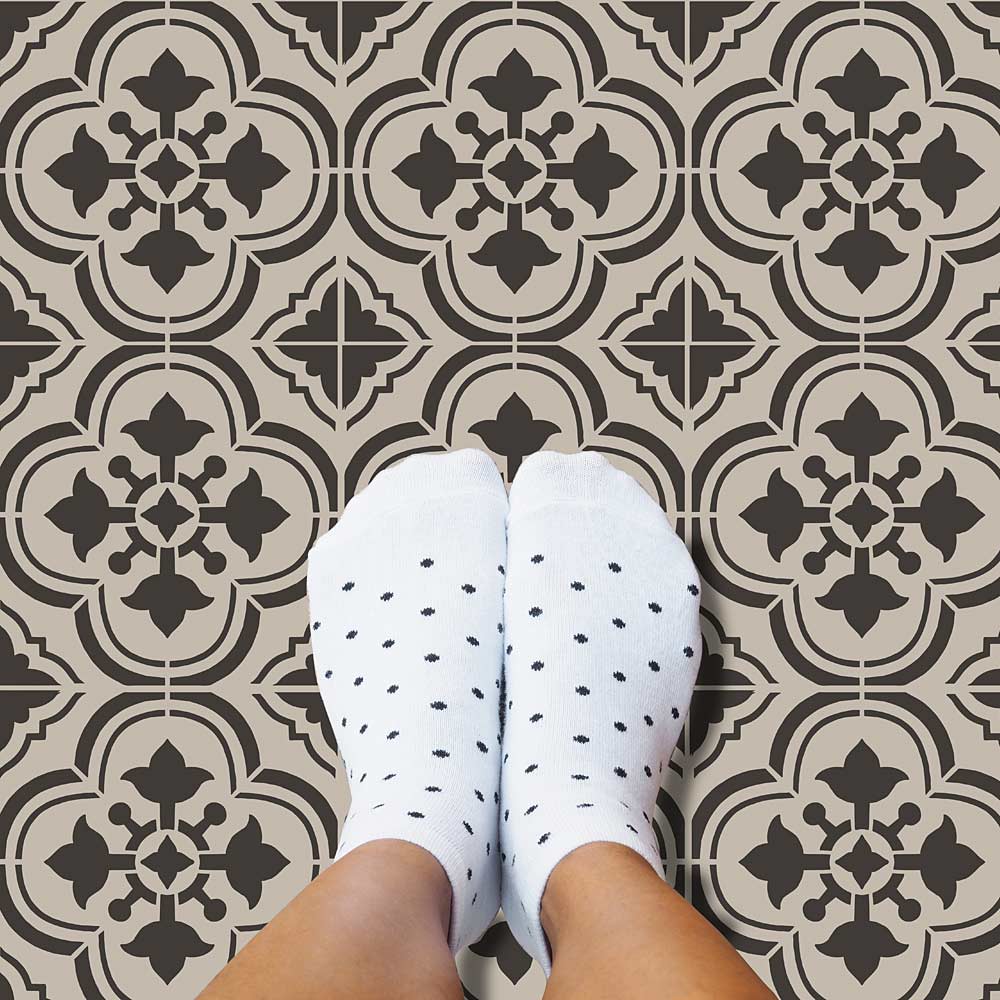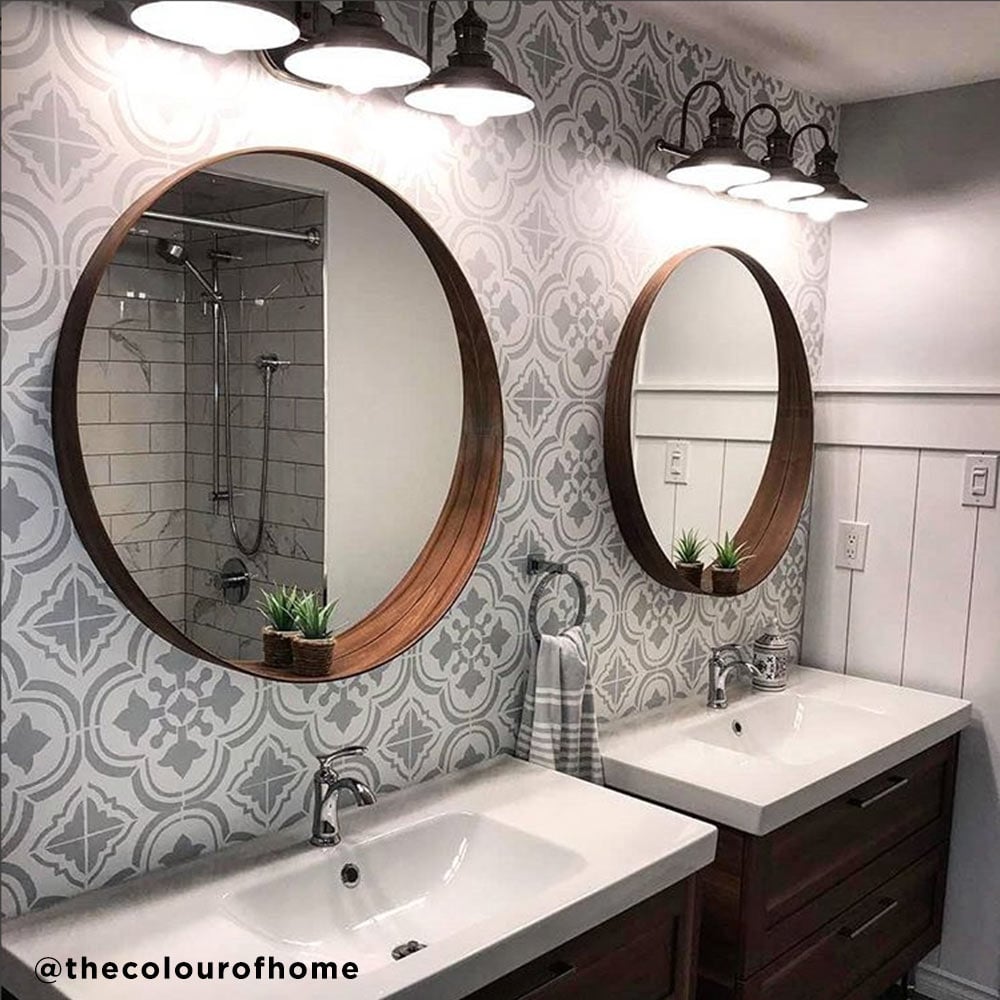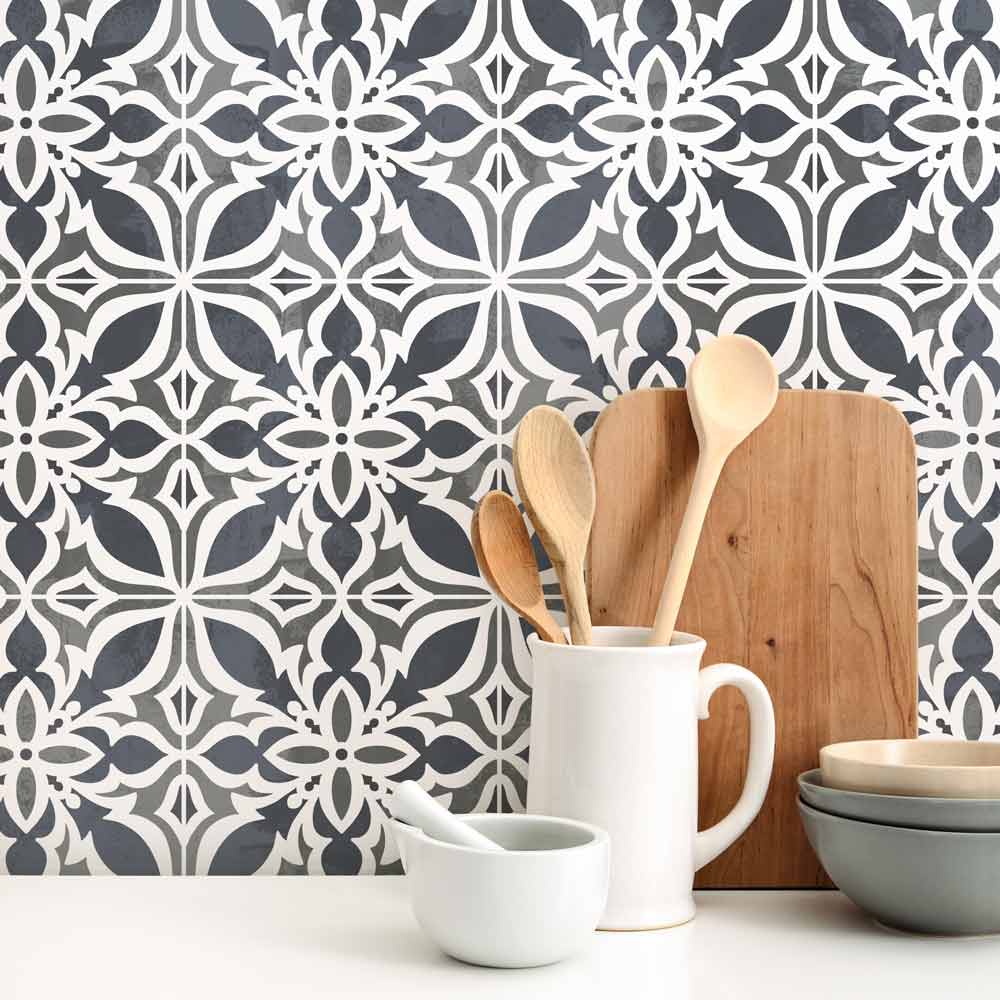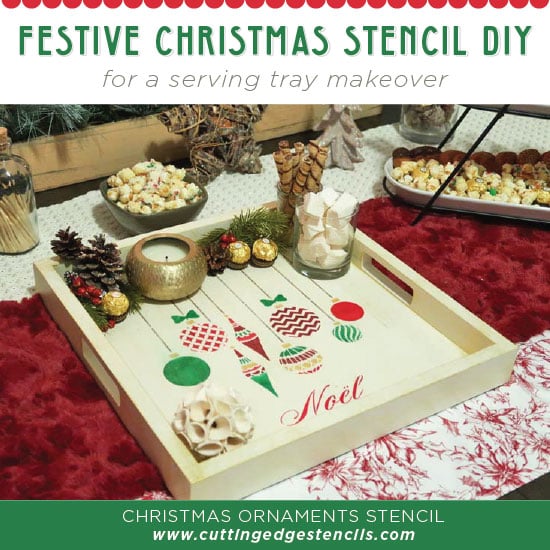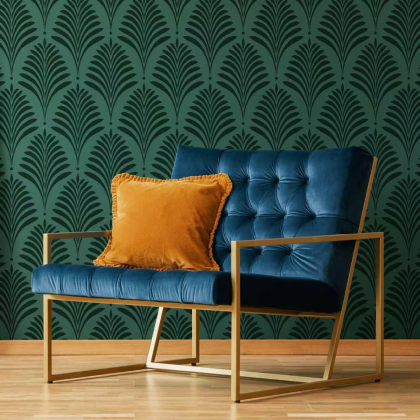Tile Stencils Create a Moody Fireplace Makeover
Don’t Replace Your Outdated Fireplace Tiles – Stencil Them!
Cutting Edge Stencils is the perfect solution when tackling a DIY remodel. You can use tile stencils on almost any project. We have seen some truly stunning makeovers with tile stencils that range from floors, walls, furniture, and you guessed it – fireplaces! Tile stencils are an amazing decorating tool because you don’t have to be an expert and there is zero demo required to get started! If you’re just starting your DIY journey and are looking to makeover your fireplace, stencils are a budget friendly solution. By the end of this tutorial, you’ll know how to stencil your fireplace like a Pro!

HOLD PLEASE! Before you submit your order, did you measure your tile correctly?
When determining the stencil size you need for your project, we recommend measuring your tile from tile edge to tile edge. If you have those boring builder-grade tiles, don’t take their word for it on the size. Take a moment to measure. Don’t include the grout line when you measure the size of your tile. Before we stenciled this fireplace, we knew we wanted the tile stencil to fill the size of one full tile on the base of the hearth. If your tile is not listed in our standard size offerings, Cutting Edge Stencils can cut a custom tile stencil size just for you! For this fireplace, we used the Aloha Tile Stencil.
Will the square tile stencils fit on my tiles if they are various sizes and/or have inconsistent grout lines?
Yes! With a tile stencil, you can paint right over the original tile shape and grout lines. Once painted, no one will notice your old grout lines! You’ll essentially be stenciling faux square tiles that will give your outdated fireplace a brand new look. We did exactly that for some of the smaller cut tiles on this fireplace.
What supplies do I need to complete a stencil project?
We ALWAYS recommend buying more than one tile stencil when it comes to tile stencil projects. Buying two or more tile stencils will come in handy towards the end of your project when your final steps are stenciling those hard to reach areas as it may require you to cut the stencil to fit.
You will also need a dense foam roller for a smooth paint finish and a range of stencil brushes for those tight corners and edges.
No demo involved sounds too good to be true, what do I do to prep my project?
Prepping your fireplace correctly before you stencil is THE MOST important step! We want to create the best paint adhesion before we start stenciling. For this project, we started by giving the tiles a good clean with TSP cleaner. Next we lightly sanded the tiles by hand with a 120 grit sanding block.. Giving your tile a good sanding will allow the paint to adhere to the tile. Once sanded, we vacuumed all the dust and gave it one more clean with TSP cleaner. TSP is a heavy-duty cleaner that is specially formulated to remove dust and dirt. We then allowed the surface to dry completely. We then taped the perimeter of the fireplace with low-tack blue painters tape to avoid getting paint on the mantel and other unwanted areas.
Up Next – Priming!
Apply 2-3 coats of bonding primer to your fireplace tile with a 4” dense foam roller before you start painting your desired base color. For this project we used Zinsser Prime Coat. Allow the primer to fully dry between coats so you do not create a gooey buildup. Let the primer dry a full 24 hours before you begin applying your base coat.

What kind of paint should I use for this type of stencil project?
We recommend using a paint in a flat latex finish. Apply at least 2 coats of your base coat before you begin stenciling. Allow each coat to dry fully before applying the next. For this project we used the color Black Magic by Sherwin Williams for the base coat. For the stenciling portion of this project, we used a White Chalk Paint by Behr. Using a chalk paint can greatly decrease your chances of paint seepage under your tile stencil and give you the best stenciling results.

So, How Do We Start?
Since the tiles on this fireplace were fairly symmetrical, we decided to start with our full sized tiles and work from the center tile and move outward. We aligned our tile stencil in the center of our fireplace tile and secured it with a few pieces of blue painter’s tape.

Loading your roller or stencil brush with paint is a crucial step and the best way to prevent paint bleed. Evenly load a 4” dense foam roller with your stencil paint color. You then need to offload the paint onto a paper towel. You only need a small amount of paint on your roller. Too much paint and you will not achieve those crisp clean lines.
Using light pressure, gently roll the paint over your stencil. Use light, even coats to build up the level of paint coverage you want. We opted for a slightly distressed look and chose to have some areas more opaque than others.
Since you are only rolling on thin layers of paint, your stenciled tile should dry within 1-2 minutes. You can now align the tile stencil with the next fireplace tile you need to stencil. For this project we are ignoring the built in registration marks for alignment since we are following the placement of our fireplace tiles themselves.

Create a seamless waterfall edge with the tile stencil!
We really wanted to achieve a seamless look for the front corners of this fireplace and did not want partial stencil elements. This is the part where we decided to ignore groutlines and tile cuts in order to create something brand new. This was, for sure, one of the most difficult parts of this project.
Fortunately, our tile stencils are super flexible and can easily be bent for exactly this scenario! First we our stencil with our existing tile edge on the top edge of the hearth. Next we secured only that top section to the tile and rolled on our paint. We then gently bent the stencil over the corner, held it in place, removed the tape from the top of the stencil and secured the stencil onto the front face of that tile. We then rolled the paint onto this section and even used a stencil brush to make sure our stencil design was not interrupted by that grout line.
Our stencil pattern now flows gracefully over the front edge of our fireplace and you would never know that there were separate tile cuts underneath!


What about corners that meet my mantle, wall, or floor?
We had to tackle those tricky spots too! This is where the flexibility of our stencils comes in handy once again.

Align your tile stencil like you have done for all of the others and secure with tape in the places that make the most sense. You may need to use your free hand to bend and hold the stencil in place for this step. When applying your paint, you want to roll into the corner. Do not press or smush the roller into the corner as this will result in paint bleeding under the stencil. In order to get right up to the edge of the corner you will need to switch to your stencil brush and lightly stipple in the paint.
All I have left are those hard to reach areas – what do I do?
Our goal for this project was to complete all of the full sized tiles that we could before moving on to those smaller, more difficult areas. As we mentioned earlier, we recommend buying more than one stencil. Since we had more than one tile stencil on hand, we were able to cut one of the stencils to custom fit the space we needed to work on. As always, measure twice, cut once. You want to measure the tile section you want to stencil and relay that measurement onto your stencil. We used a marker to mark the cut line and then double checked by placing the stencil against the fireplace tile to make sure we had it right. Then we took a deep breath and started cutting! You are now ready to align and secure your stencil to the fireplace and roll on your paint!

What do I do if I have some stencil bleed?
Stenciling comes with a learning curve and even the best of us are not immune to some paint bleeding beneath the stencil. Once you are done, you can go back through with a small brush and touch up any areas that you aren’t completely satisfied with. Pro Tip: Clean your stencil every few passes to reduce the amount of paint buildup on both the front and back of the stencil. A clean stencil will lay flat against your surface better than a dirty one.
How can I ensure my stenciled tiles stand up to wear and tear?
We HIGHLY RECOMMEND that you apply at least 2 coats of Varathane’s WATER BASED polyurethane to protect your stenciled fireplace tile. Why water-based polyurethane? Because it doesn’t yellow over time, it has a fast dry time, and it’s better for the environment! Just be sure to allow ample dry time between coats.

And now you are done! All you have left to do is stage that mantle like the pro you are. You can now step back and admire your hard work that surely transformed the look of your space.

The possibilities for our tile stencils are truly endless. Take a look at how Meredith, the creative mind behind the page @artsandclassy, completely transformed her dated bathroom floor. Read her blog to learn how she used our Santa Ana Tile Stencil to upgrade her space!
Can’t get enough of Cutting Edge Stencils:
- Check out our Cutting Edge Stencils Facebook Page to see our beautiful customer photos and interact with the people who created them!
- Buy our Tile Stencils or Wall Stencils for your next stencil project, and browse our other wonderful stencil designs
- Follow us on Instagram and Pinterest and share your designs using #CuttingEdgeStencils. We love seeing your projects!
- Feeling inspired? Check out our other Blog posts for more inspo and stencil designs!
Thanks for reading and happy stenciling!
Share this page!




